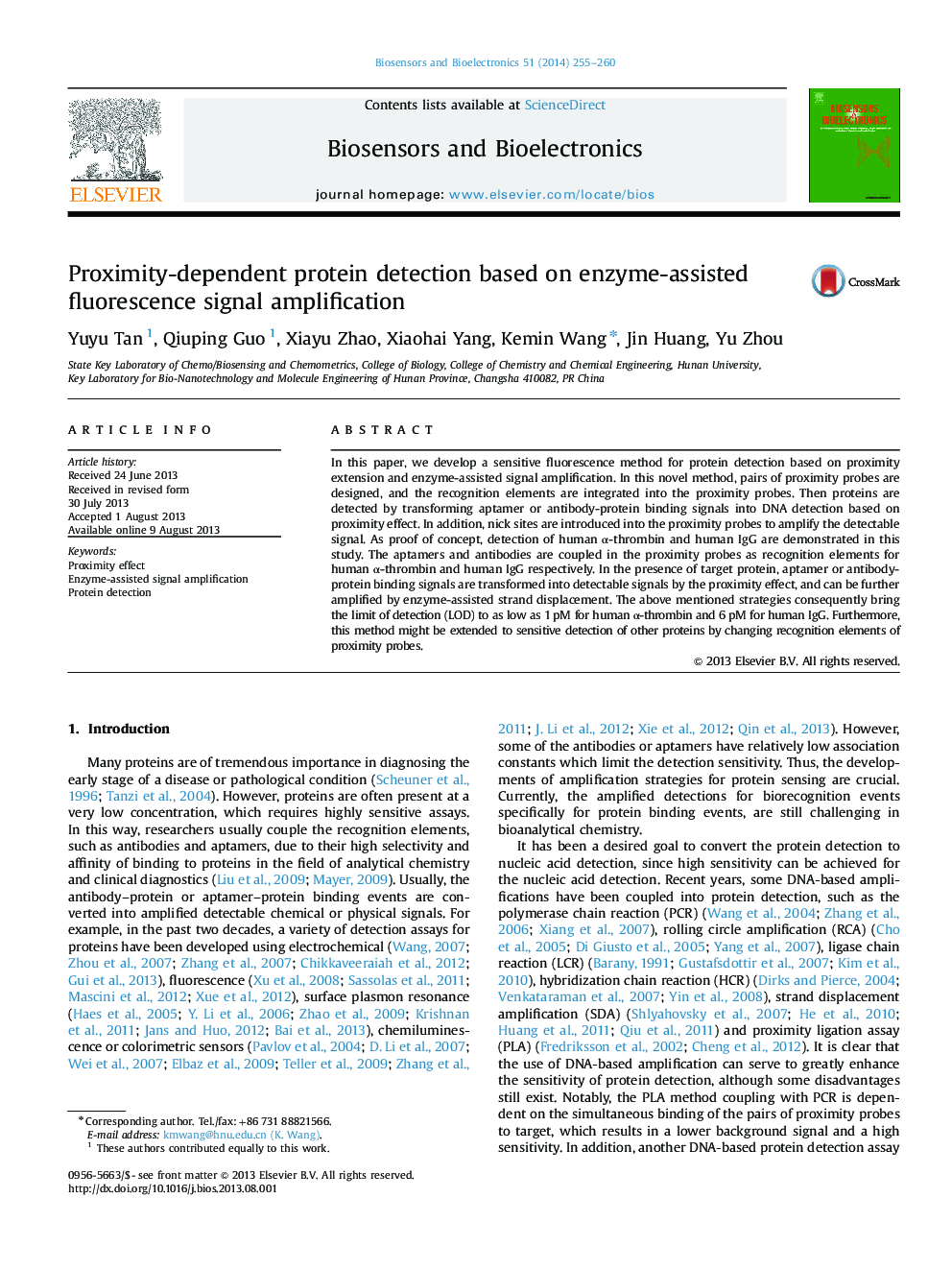| Article ID | Journal | Published Year | Pages | File Type |
|---|---|---|---|---|
| 866573 | Biosensors and Bioelectronics | 2014 | 6 Pages |
•We developed a novel fluorescence signal amplified method for protein detection.•The fluorescence assay is based on proximity effect.•The signal can be amplified by enzyme-mediated amplification system.•The fluorescence assay works under isothermal conditions.•This method can be extended to other protein detection by changing recognition region.
In this paper, we develop a sensitive fluorescence method for protein detection based on proximity extension and enzyme-assisted signal amplification. In this novel method, pairs of proximity probes are designed, and the recognition elements are integrated into the proximity probes. Then proteins are detected by transforming aptamer or antibody-protein binding signals into DNA detection based on proximity effect. In addition, nick sites are introduced into the proximity probes to amplify the detectable signal. As proof of concept, detection of human α-thrombin and human IgG are demonstrated in this study. The aptamers and antibodies are coupled in the proximity probes as recognition elements for human α-thrombin and human IgG respectively. In the presence of target protein, aptamer or antibody-protein binding signals are transformed into detectable signals by the proximity effect, and can be further amplified by enzyme-assisted strand displacement. The above mentioned strategies consequently bring the limit of detection (LOD) to as low as 1 pM for human α-thrombin and 6 pM for human IgG. Furthermore, this method might be extended to sensitive detection of other proteins by changing recognition elements of proximity probes.
